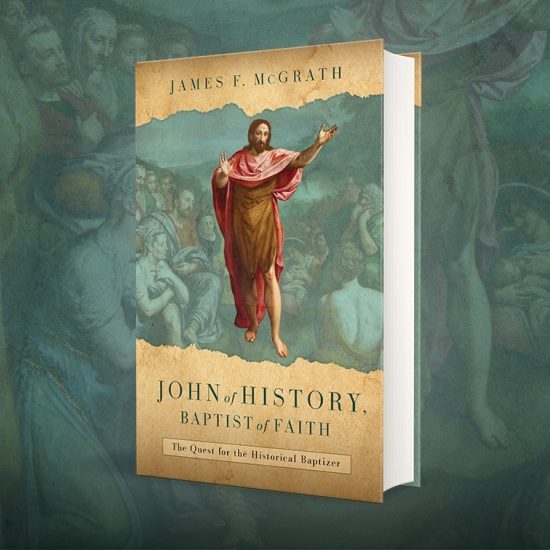HOLLAND, Mich. — Looking for a way to help members of her youth group use moral discernment when making life choices, a Lutheran youth minister in Holland, Mich., re-read a copy of Charles Sheldon’s In His Steps, a classic story from the 1890s in which the central character frames right and wrong with the question, “What would Jesus do?”
Friendship bracelets were becoming popular in 1989. So, Janie Tinklenberg asked a friend who worked for a local company about producing some woven wristbands with the acronym WWJD — because there wasn’t enough room to spell it out — both to remind young people of their commitment to Christ and as a tool to witness to friends.
The rest, of course, is history. Tinklenberg, now on staff at Peace Lutheran Church in Gahanna, Ohio, belatedly obtained trademark for the phrase, but since it was considered public domain, she did not receive any royalties.
That didn’t stop others from cashing in, however. By 1997, Lesco Corporation, the company that produced the first bracelets, had sold about 300,000. Then Paul Harvey mentioned them on his syndicated radio show, and dozens of corporations rushed in to capitalize on a market craze spilling over into WWJD shirts, hats, key chains and coffee mugs.
Now WWJD is remembered as the quintessential Christian fad. A fad, according to the dictionary, is a practice or interest followed for a time with exaggerated zeal, and then abandoned when something else comes along to take its place.
Sociologists classify fads as a form of “collective preoccupations,” where many people over a relatively broad social spectrum engage in a similar behavior and interpret it in similar ways in order to identify their place in society.
As such, they have a role to play in building group identity. They appeal particularly to youth, because they provide both a way to win peer approval and distance young people from their parents
In religion, where group identity becomes a lens for evaluating every aspect of life, fads can be especially potent.
In a 2006 book, Flavor of the Month: Why Smart People Fall for Fads, University of Delaware professor Joel Best says the appeal of fads is understood in context of American values of improvement and progress. Eager to remedy problems, Americans quickly invent new solutions to address a perceived shortcoming.
Many fads are harmless, Best asserts, but when they become institutionalized as conventional wisdom in a discipline or field and then fall short of expectations, they can be counterproductive.
Some conservative Christians see elements of that in widely popular movements like Rick Warren’s “The Purpose Driven Life” and the Emergent Church.
Todd Wilken, a Lutheran minister and host of a Christian radio program, wrote an article describing the “Fad-Driven Church.”
“There is a new book, a new program or a new emphasis every year or so,” he said. “It’s all anyone can talk about; it’s all the preacher preaches about — for awhile. Then, as quickly as it came, it’s gone. As eagerly as it was received, it’s abandoned and forgotten.”
That may not sound like a problem, but it is the only kind of Christianity that many churches know, Wilken said. Many fads are harmless, he says, but most contain theological error.
Following a progression from Promise Keepers to Weigh Down Workshop to The Prayer of Jabez to Left Behind, Wilken complained, “In the fad-driven church, ‘exaggerated zeal’ has replaced ‘the faith once for all delivered to the saints.’”
Fascination with Christian fads indicates lack of discernment and desperation about becoming relevant, Wilken asserted.
Os Guinness, author of Prophetic Untimeliness: A Challenge to the Idol of Relevance, argues that in their uncritical pursuit of relevance, Christians have actually become less relevant.
Guinness embraces the concept of “resistance thinking.” In a 1945 essay, C.S. Lewis argued that if Christians adapt the gospel to what fits their times, they will have a comfortable and convenient faith, but it will be irrelevant to the next generation.
Lewis instead called for looking in the gospel for what is difficult or obscure as a way to be true to the whole gospel and stay relevant to any generation.
Outsiders often perceive fads as frivolous or silly, but they can be serious and start with the best of intention. What distinguishes them from social movements is whether they last.
When either introduced or popularized by Charles Finney during the Second Great Awakening, many criticized the “altar call,” urging penitent sinners to come forward and pray at the close of a service, as a heretical fad. Today, it is standard fare in most Baptist churches.
Some find parallels in hip young ministers like Rob Bell, pastor of Mars Hill Bible Church in Grandville, Mich., and a leader in the Emergent Church movement.
“He’s figured out how to convey basic Christian doctrine in a highly skeptical culture,” Quentin Schultze, a professor of communication at Calvin College, said in a 2006 story profiling Bell in the New York Times.
Schultze, author of books including High Tech Worship? Using Presentation Technology Wisely, says the key to discerning if an innovation glorifies God or is a distraction is whether it adds quality to the worship experience or is simply added because it seems cool.
Others insist the problem is not the fad itself but the effect. If it appeals only to Christians, they say, it tends to separate the church from culture instead of engage it.
Five years ago, church groups filled theaters in an outreach program calling Mel Gibson’s The Passion of the Christ movie “perhaps the best outreach opportunity in 2,000 years.” After the hubbub was over, the film earned $611 million, and worship attendance remained unchanged.
Tinklenberg says she always knew the WWJD fad would fade, because only a spiritually mature Christian would seriously ask that question. She didn’t mind people making money off her idea, but she regretted seeing it cheapened with products like a WWJD board game, with 400 questions asking what Jesus would do in different situations and the first player getting W, W, J and D wins.
“WWJD isn’t about pat answers,” Tinklenberg told Salon. “It’s about struggling with faith, trying to figure it out. The meaning is in the struggle.”
Bob Allen is senior writer for Associated Baptist Press.






